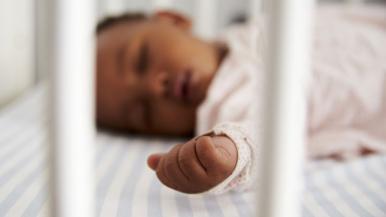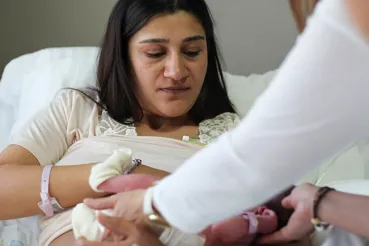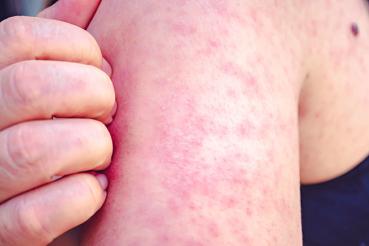Most people think of sudden infant death syndrome, or SIDS, as a tragedy that defies explanation: A baby simply stops breathing during the night for no apparent reason.
As more sleep-related infant deaths have been investigated, however, it turns out a significant number of those deaths happened when a baby was in an unsafe sleep environment. In response, the Centers for Disease Control and Prevention (CDC) introduced the term "sudden unexpected infant death," or SUID, a broad term that includes all sudden infant deaths.
According to Kyran Quinlan, MD, a pediatrician at Rush University Children's Hospital, understanding what SUID encompasses may help prevent, or at least reduce, the number of sleep-related infant deaths.
What is SUID?
SUID traditionally affects children less than 1 year old, with the majority of deaths occurring within the first six months of life.
"We don't really know everything about SUID, but we do know that babies are physically and developmentally unable to get themselves out of dangerous situations, especially very young infants, like a 1-month old or a 2-month old," Quinlan says.
According to the CDC, SUIDs are made up of three categories:
1. SIDS
2. Accidental suffocation or strangulation in bed
3. Unknown causes
The second category poses the largest threat, and it's the only one parents can control.
In 2015, the CDC reported nearly 4,000 SUIDs in the United States. "In the city of Chicago, it's about one a week," says Quinlan. "The medical examiners in Cook County have told us that it's very rare for them to have a sudden unexpected infant death where the baby was in a crib. Almost always these babies are in the bed with the parent."
Be aware of potential sleeping hazards
Adult beds pose a number of risks for babies, including the following:
- A soft sleep surface: An adult bed mattress is less firm than a crib mattress.
- Soft blankets and pillows: These pose suffocation and strangulation risks for infants.
- Warmth of an adult body: Sleeping next to an adult body may cause an infant to overheat.
While bed sharing is one of the largest risk factors for SUIDs, unsafe conditions in cribs and sleep positions also play crucial roles.
"If a baby is on a soft sleep surface, is face down, or has their face pressed up against a blanket, pillow or soft stuffed animal, the baby could begin to suffocate. This could lead to their death," says Quinlan.
The baby could also re-breathe their expired breath, which could also lead to death. As humans we exhale carbon dioxide, or bad air. A lot of fluffy bedding surrounding a sleeping child can create the build up of bad air around an infant's face, causing suffocation due to lack of oxygenated or fresh air.
If a baby is on a soft sleep surface, is face down, or has their face pressed up against a blanket, pillow or soft stuffed animal, the baby could begin to suffocate.
Practice your ABCs
So what can parents do to create the safest possible sleep environment for their baby? For starters, they can follow the ABCs of safe sleep:
• Alone. The baby should go to sleep in their own crib, not the parents' bed.
• Back. Babies should be placed on their backs for sleeping, not face down on their stomach or side.
• Crib. Babies should sleep in a crib with just a firm mattress and tight-fitting sheet; do not place soft blankets, pillows or stuffed animals in the crib, and don't add bumpers.
"There are rare occasions where a baby who's beginning to roll may get entangled in a bumper and end up being suffocated by it," Quinlan says.
For parents concerned about the stage when their infant begins to roll onto the stomach, Quinlan offers this advice, "One thing parents can do is give the baby plenty of tummy time while awake. This gives the baby practice being face down and how to be able to move to protect their ability to breathe."
But even before this stage, Jean Silvestri, MD, medical director of the neonatal intensive care unit (ICU) at Rush University Children's Hospital, says a sleep sack may be a safer alternative. "We give them to babies at discharge and explain to parents that this is a wearable blanket, which helps solve the issue of loose blankets and other things in the crib," she says.
Silvestri also encourages families to ensure the baby is in a smoke-free environment and promotes breastfeeding as the preferred source of nutrition for the baby. Breastfeeding has been shown to reduce the risk of SIDS, she says, though the exact reason why is unknown.
Is a baby box a viable solution?
In an effort to lower SUID rates, Finland introduced the baby box in the 1930s. A cardboard box with a firm mattress was given to new moms during a prenatal visit to act as a safe, portable crib.
Today, a few companies have capitalized on this idea and have begun distributing them to new and expectant mothers in certain states to combat SUID.
"I feel like baby boxes are a distraction from the basics of safe sleep. A product is not the solution to this issue," Quinlan says. "We should be emphasizing consistent use of existing products and, more important, helping every new parent understand the proper way to put their baby down to sleep."
Being a new parent comes with a steep learning curve, so it's beneficial for both parents and babies to have a strong support system at home.
Ideally that means having relatives or friends who can learn how to properly care for an infant alongside the parents and who understand the importance of safe sleeping conditions.
"Having a supportive family or friends who can help you when you're tired and say, 'Let me take the baby. Let me put the baby in the crib. Let me help you.' can also make a world of difference," she says.




